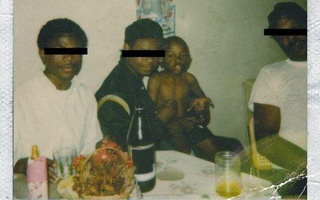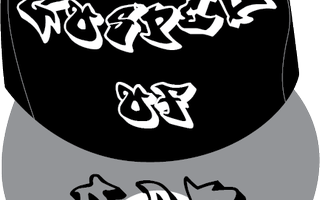It would not be outlandish to claim that Compton rapper Kendrick Lamar is the greatest eighties baby ever to pick up a microphone. His flow effortlessly glides through different vocal registers, the rhythmic patterns of his verses skittering frantically around each other. His language is vivid and abstract, his narrative perspective subtly shifting. He even often layers two or three differently pitched takes on top of one other, allowing himself to find a tonal Netherworld seldom reached by other rappers. He can switch his register at a split second’s notice, from trembling melancholy to gangster exuberance.
Last week, Lamar’s major label debut, “good kid m.A.A.d city,” ended its first week as the number one R&B/Hip-Hop album in the nation, sneaking into the number two spot on the Billboard 200, right behind Taylor Swift’s utterly brain-numbing “Red.” The album sold over 242,000 copies, easily contending with 2012’s R&B/hip-hop juggernauts Nicki Minaj and Frank Ocean, whose “Channel Orange” sold about 131,000.
Lamar started to garner major attention about a year ago with his 2011 breakout effort, “Section.80.” The album was an observational epic about Lamar’s generation: the listless, violent, and strung out crack babies born in the late eighties. On “A.D.H.D.,” the album’s standout track, Lamar inscribes himself as a social bystander, spiritually aloof from his tortured generation: “I’m in the house party trippin’ off / My generation sippin’ cough syrup like it’s water / Never no pancakes in the kitchen.” The album’s lush production merged the mid-nineties jazz-influenced hip-hop of A Tribe Called Quest with Outkast’s slightly spacier permutation.
If “Section.80” is the story of a drugged-out generation that Lamar at least partly eschews—he himself proclaims to neither drink nor smoke weed—then “m.A.A.d city” is the story of a confused adolescent growing up in Compton, pushing away his petty-minded family, and haltingly participating in his friends’ gangster lifestyle. The album’s skits, all of them narrated by Lamar’s friends and family (his mom and dad make the most remarkable and riotous appearances), frame in speech the Compton epic that Lamar weaves into song. His mother repeatedly implores him to bring back her car, while his father drunkenly demands the return of his “motherfuckin’ dominoes.” In another skit, Kendrick’s friend secures a bottle of liquor from a reluctant accomplice to soothe Lamar’s uneasiness: “Nigga, pass Dot the bottle. You ain’t the one that got fucked up. What you holdin’ it for? ... Dot, you good, my nigga? Don’t even trip, just lay back and drink that.”
The skits thus frame an ambivalent portrait of Lamar’s position in his family, his crew, and his neighborhood. While Lamar seems to participate quite actively in his friends’ criminal undertakings, he also seems to be the least comfortable with the lifestyle they lead.
Lamar’s construction of his own vulnerability is where the genius lies in “good kid m.A.A.d city.” It allows him to speak frankly about the stark reality of his upbringing without ever climbing the pulpit; he remains with the congregation, ambivalently clinging to the social world he depicts. He’s a good kid struggling to sort out his own principles, and he’s trying on different personae for size. On several songs, his shifts in narrative perspective make it increasingly difficult to identify firmly with any one of Lamar’s alteregos. On “m.A.A.d City,” Lamar recalls his menacing enemies with his gangbanging cronies, but attributes their violent behavior to evolutionary necessity rather than malevolence: “We adapt to crime / Pack a van with four guns at a time / With the slidin’ door, fuck is up? / Fuck you shootin’ for if you ain’t walkin up you fuckin’ punk?” No track ends without at least partially subverting itself. This record is the halting and messy Bildungsroman of a youth growing up in a tumultuous post-crack urban landscape.
“Growing up in Compton is real unpredictable,” Kendrick remarked in a 2011 interview. “You might be going to the liquor store and that’s your life right there…. It’s basically about being aware of everything that’s around you.” This skittish paranoia seeps into “good kid m.A.A.d city,” driving Lamar to shift constantly between various alter-egos. He is at once a vicious gangster on “m.A.A.d. City,” a kid cornered into a fight walking home from Sunday school on “good kid,” a smooth-talking player on “Sherane,” and a murdered prostitute’s sister mired in the fast life on “Sing About Me, I’m Dying of Thirst.”
In short, Kendrick Lamar has given rap listeners the most wonderfully confusing and innovative rap epic of our generation. If you knew nothing of the Compton micro-generation coming of age in the crack-addled nineties, then you will after listening to “good kid m.A.A.d. city.”
—Columnist Edward L. Monahan can be reached at emonahan@college.harvard.edu.
Read more in Arts
For Sale: Great Book, Never ReadRecommended Articles
-
 The Latest Compton Star Begins Ascent to the Throne
The Latest Compton Star Begins Ascent to the Throne -
 The New Voice of Hip Hop
The New Voice of Hip Hop -
Hear Me Out: 'The Blacker the Berry'“The Blacker the Berry,” the second single off Lamar’s as-of-yet untitled third album, reverses the infectious optimism and self-love of “i” to deal with hatred within the black community in a way that is equal parts brutal and compelling.
-
 “To Pimp A Butterfly” A Provocative and Ground-Breaking Collage
“To Pimp A Butterfly” A Provocative and Ground-Breaking Collage -
 Governors Ball 2016: Thundercat
Governors Ball 2016: Thundercat













